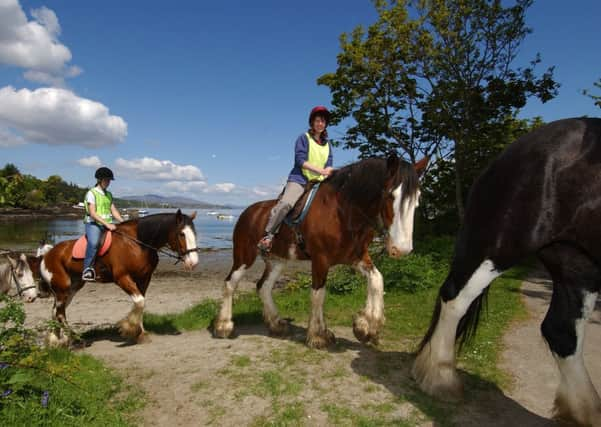Horse-friendly saddles ‘hurting human riders’


A team from Dundee University found that saddles designed to stop spinal injuries in riders also have the reverse affect on horses, in turn causing them more back problems.
The researchers have now called for further work for a saddle to be designed which protects riders and horses.
Advertisement
Hide AdAdvertisement
Hide AdThe study, led by Professor Rami Abboud and Dr Graeme Nicol, of the University’s Institute of Motion Analysis and Research, examined how the cushioning material of a saddle - known as the flocking - affects the pressure on humans and animals.
Pressure recordings were carried out on a saddle fitted with wool, the most common flocking material, and compared to readings from a saddle with air-filled panels.
It was previously known that wool-flocking can cause back pain for horses but the results show that, while air-flocking reduces the pressure exerted on the horse, it increases the pressure on the rider at the same time.
Pressure tests
Both flocking materials were tested using two pressure mats to record the pressures firstly being exerted onto the horse and secondly onto the rider.
All riders said they preferred the wool flocking, citing a variety of reasons including a loss of close contact and interaction with the horse, and a “kick back” from an unstable-feeling saddle with air flocking.
Results found that pressure exerted on the rider increased by as much as 22 per cent when air flocking saddles were used. By contrast, the air flocking saddle reduced the pressure on the horse by as much as 26 per cent.
The researchers say that the study demonstrates that further research needs to be conducted to determine the most appropriate material with which to cushion a saddle, in order to protect both horses and their riders from spinal injury.
Professor Abboud said: “We have shown that air-flocked saddles exert less pressure on the horse, but impact inversely on the rider.
Advertisement
Hide AdAdvertisement
Hide Ad“This raises the question of whether a rider should use a saddle to reduce the pressure on the horse or on themselves.”
Dr Nicol said: “The rider’s posture causes the muscles in the back to contract to balance the spine and prevent injury, which leads to large compressive forces being produced resulting in greater pressure placed on discs and joints.
“One explanation for the increase in pressure on the rider following conversion to air flocking is they frequently noted they had lost some of the feeling of the horse below them, and for this reason they may have subconsciously increased the pressure they exerted through their seat and less through the stirrups in an act to maintain horse response.
“Our results will hopefully help in the future when examining further studies and also encourage further research into the understanding of the shock attenuation properties of different saddle flocking materials.
“As a result this will hopefully allow the optimum materials for saddle manufacture to be discovered in the hope of avoiding preventable injuries occurring to both horse and jockey.”